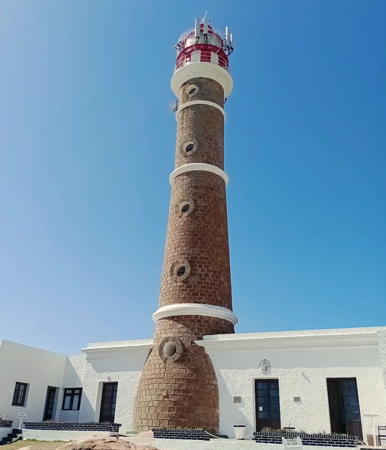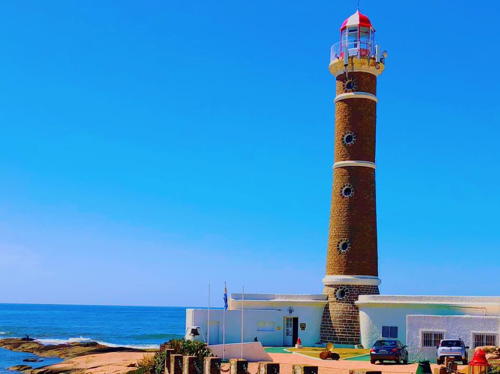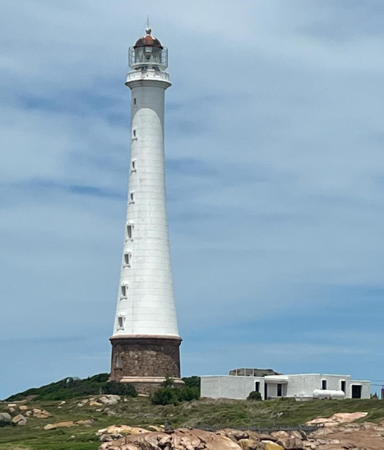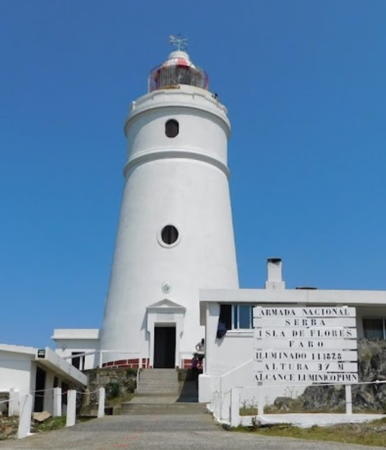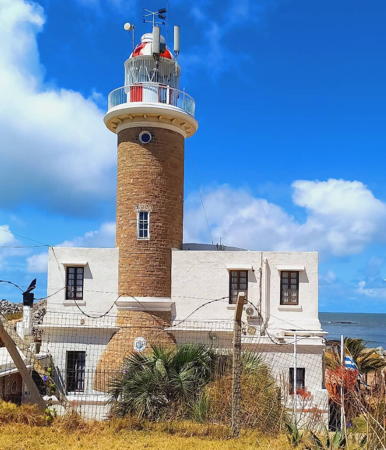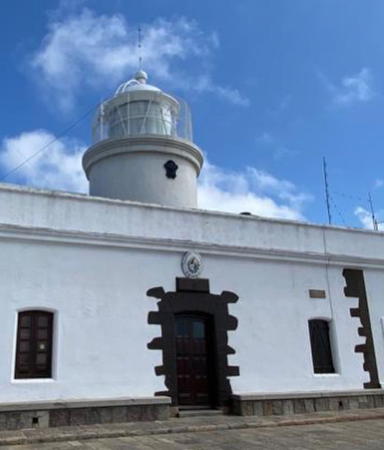The Oriental Republic of Uruguay is a relatively small country of South America, located south of Brazil and north of Argentina. As a border zone between the Portuguese settlements to the north and the Spanish settlements to the south the area of Uruguay (known then as the Banda Oriental) was sought first by Portugal and Spain and later by their successors Brazil and Argentina. Following nearly three years of the Cisplatine War between Brazil and Argentina the Treaty of Montevideo, signed in August 1828 through British mediation, established Uruguay as an independent nation.
Starting on the South Atlantic Ocean at the Brazilian border the coastline of Uruguay curves gradually westward along the northern side of the great Río de la Plata embayment and estuary. Ship traffic is heavy along this coast, so to guard it a series of handsome masonry lighthouses were built during the late 1800s and early 1900s. These lighthouses remain in service, many of them still staffed. Seven of them are readily accessible along the well-populated coast and five are open for climbing every day of the year.
Uruguay is divided into nineteen departments (departamentos).
The Spanish word for a lighthouse is faro; a smaller light is often called a farola or a baliza (beacon). In Spanish isla is an island, cabo is a cape, punta is a promontory or point of land, péñon is a rock, arrecife is a reef, bahía is a bay, ría is an estuary or inlet, estrecho is a strait, río is a river, and puerto is a port or harbor.
Active lighthouses in Uruguay are owned by the navy (Armada Nacional de Uruguay) and maintained by the Departamento de Ayudas a la Navegación.
ARLHS numbers are from the ARLHS World List of Lights. UY numbers are from Uruguay's Lista de Faros. Admiralty numbers are from volume G of the Admiralty List of Lights & Fog Signals. U.S. NGA List numbers are from Publication 110.
- General Sources
- Online List of Lights - Uruguay - East Coast and Río de la Plata
- Photos by various photographers posted by Alexander Trabas. Hendrik Martin Porath and Andreas Köhler contributed many photos from Uruguay.
- Faros de Uruguay
- Articles in the Spanish edition of Wikipedia.
- Leuchttürme in Uruguay
- Photos by Andreas Köhler.
- Lighthouses in Uruguay
- Photos by various photographers available from Wikimedia.
- World of Lighthouses - Uruguay
- Photos by various photographers available from Lightphotos.net.
- Leuchttürme Südamerikas auf historischen Postkarten
- Historic postcard views posted by Klaus Huelse.
- Google Maps
- Satellite view of the Uruguayan coastline.
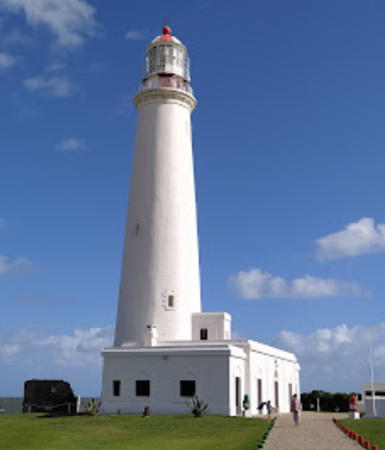
Cabo Santa Maria Light, La Paloma, January 2022
Google Maps photo by Cary de los Santos Guibert
